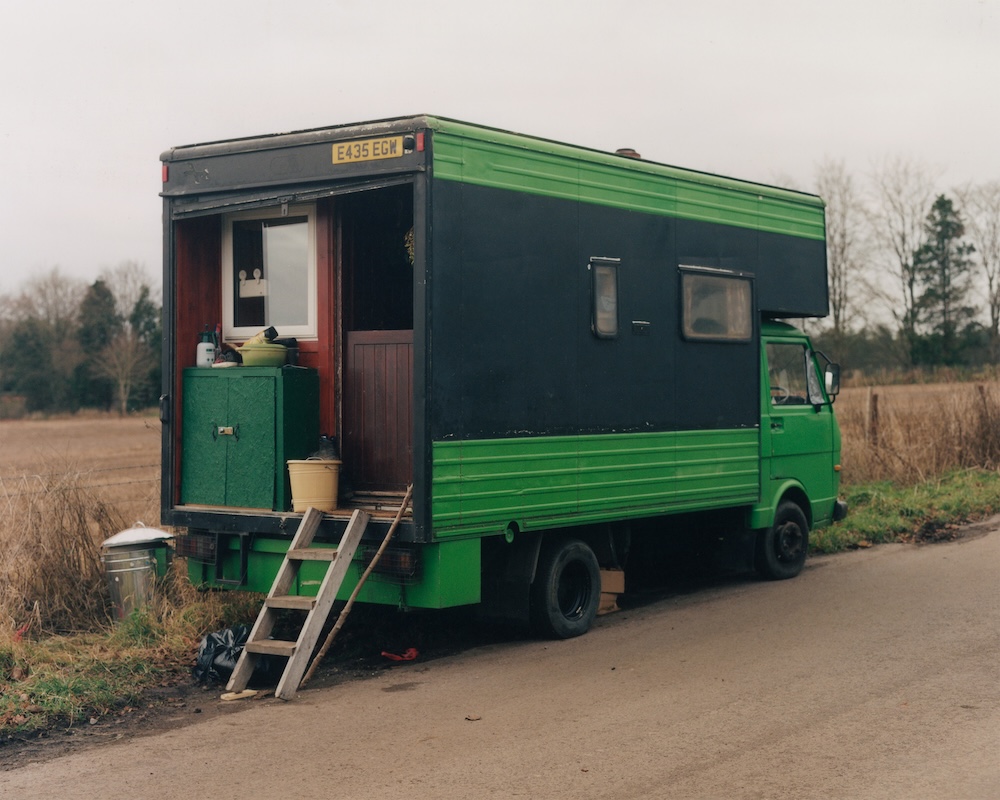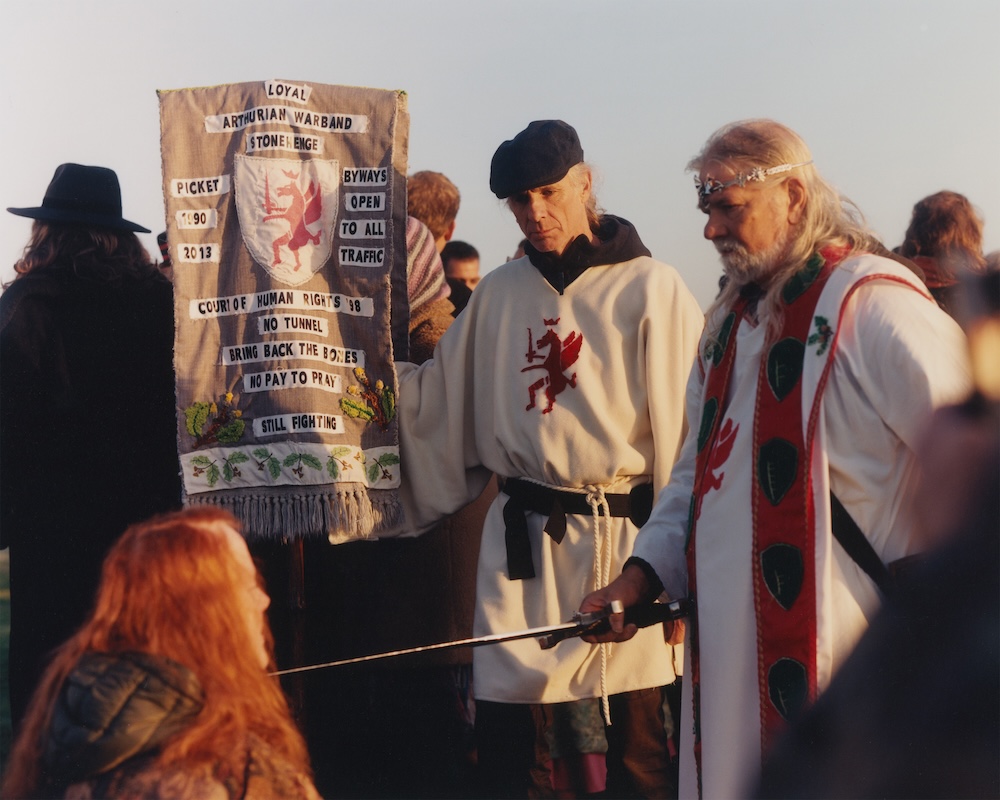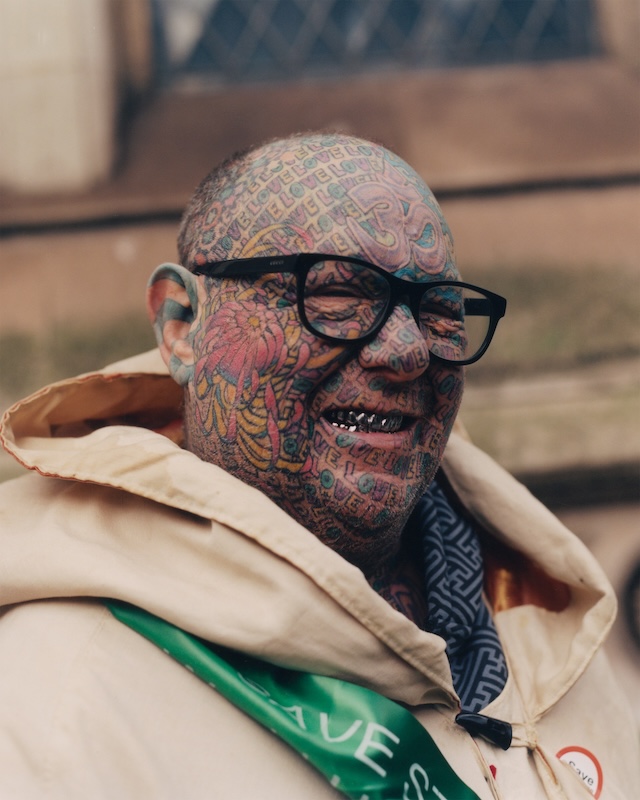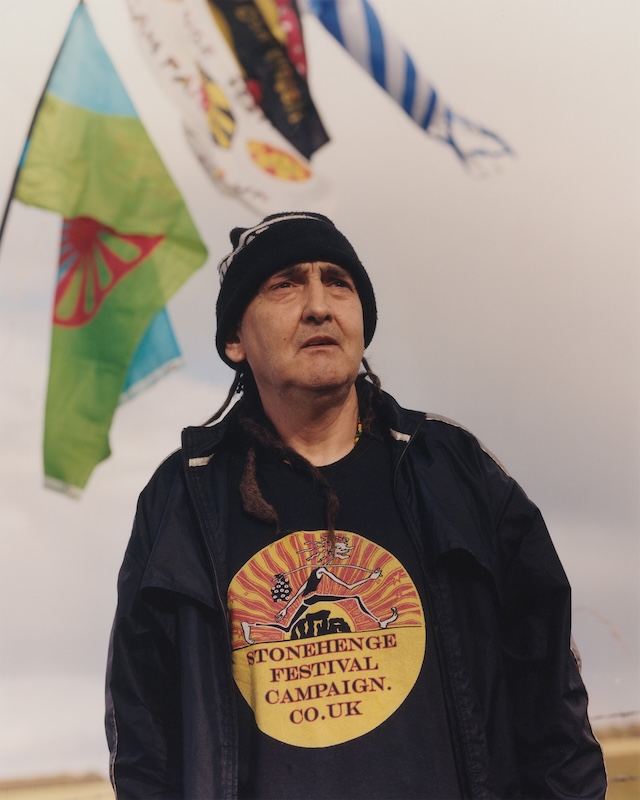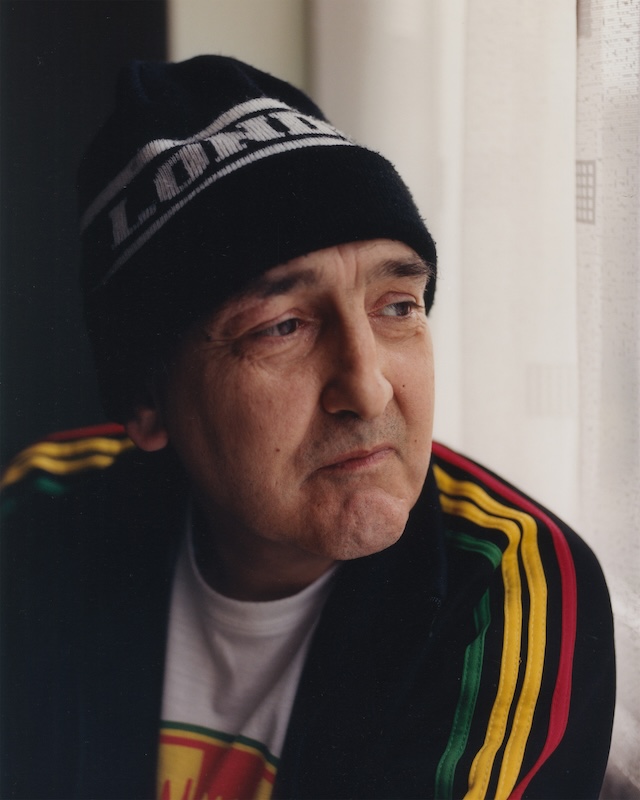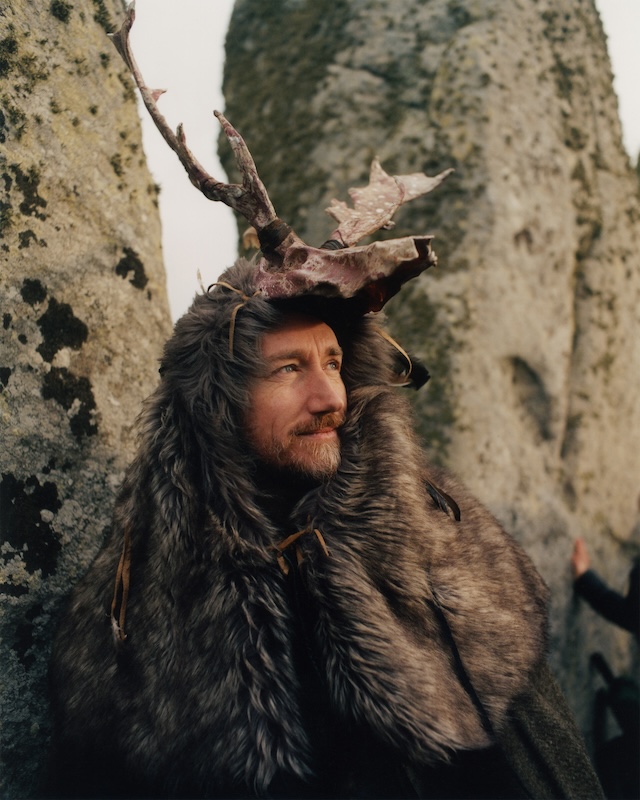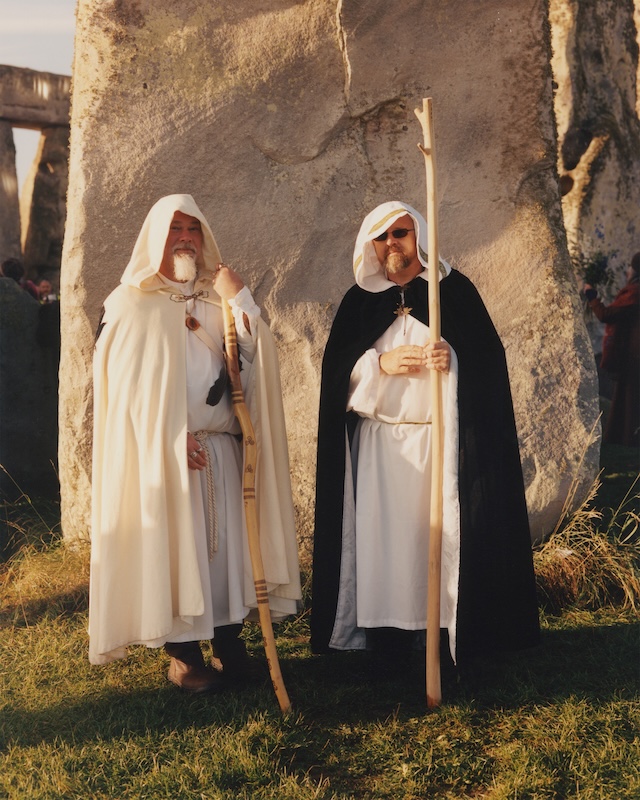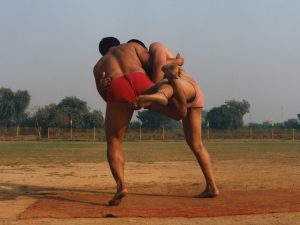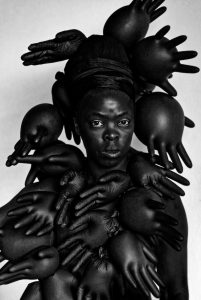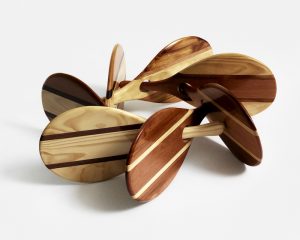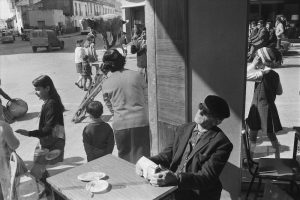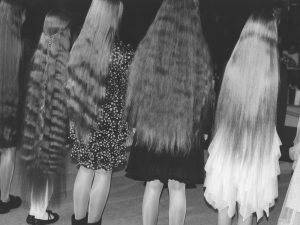Documenting Stonehenge’s solstice and equinox celebrations, Freddie Miller’s latest project strives to restore free festivals and keep ancient rituals alive
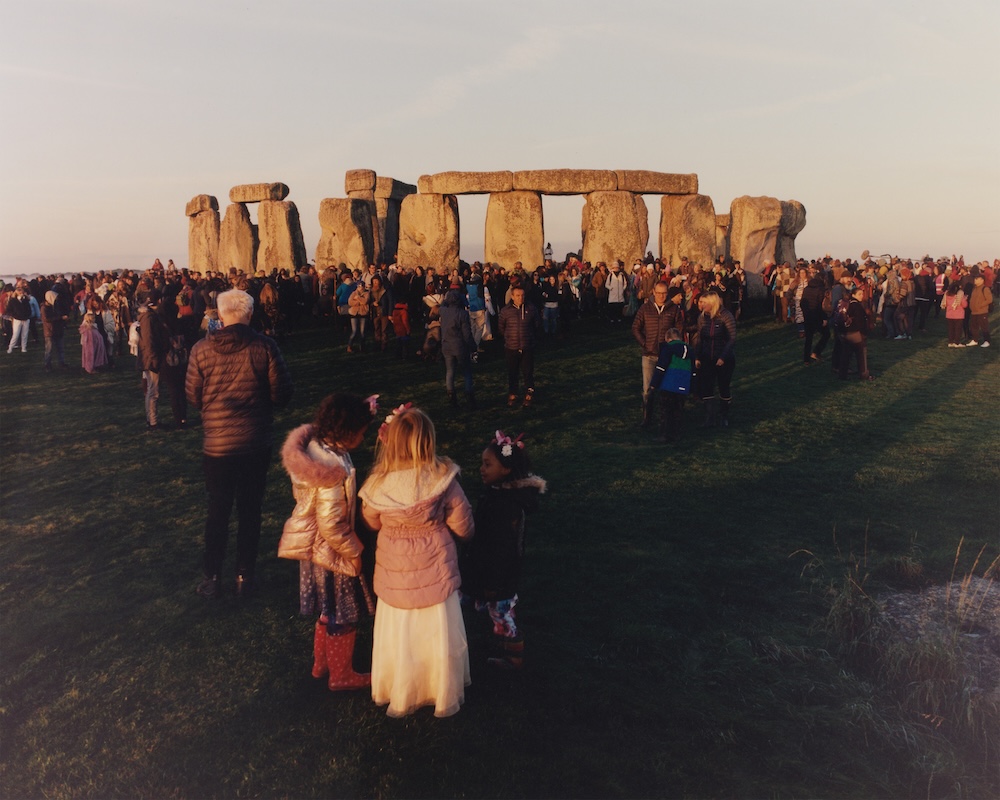
Every solstice, thousands of people from all walks of life flock to Stonehenge, whether it’s druids, pagans, travellers or families taking their kids out for a magical sunrise celebration. On a usual day, the site is guarded by ropes, but for two hours during the solstice or equinox, the English Heritage lets everyone roam freely around the historic stones as they have done for decade’s past. However, this protected space and its ancient rituals are now under threat.
When Freddie Miller, a Bristol-born London-based photographer, attended a Beltane druid ritual last year while doing research for a project, he met a new friend named Sid Hope. He was passing around flyers which Miller thought looked like a “trippy cross between acid rave posters and DIY cut’n’paste punk zines”, with the words ‘Stonehenge Festival Campaign’ printed on the top. “A subculture clash if you will.” They exchanged a few words and Miller came to learn about Hope’s campaigns to reinstate a free festival at Stonehenge where, back in the 70s, up to 60 thousand people could gather for the solstice. That was until Thatcher wagged her wand and put a stop to the celebrations at the ‘Battle of the Beanfield’ in 1985, a brutal police crackdown which stopped the festivities in a flashpoint. Yet many, like Hope, are pushing to keep these ancient rituals alive.
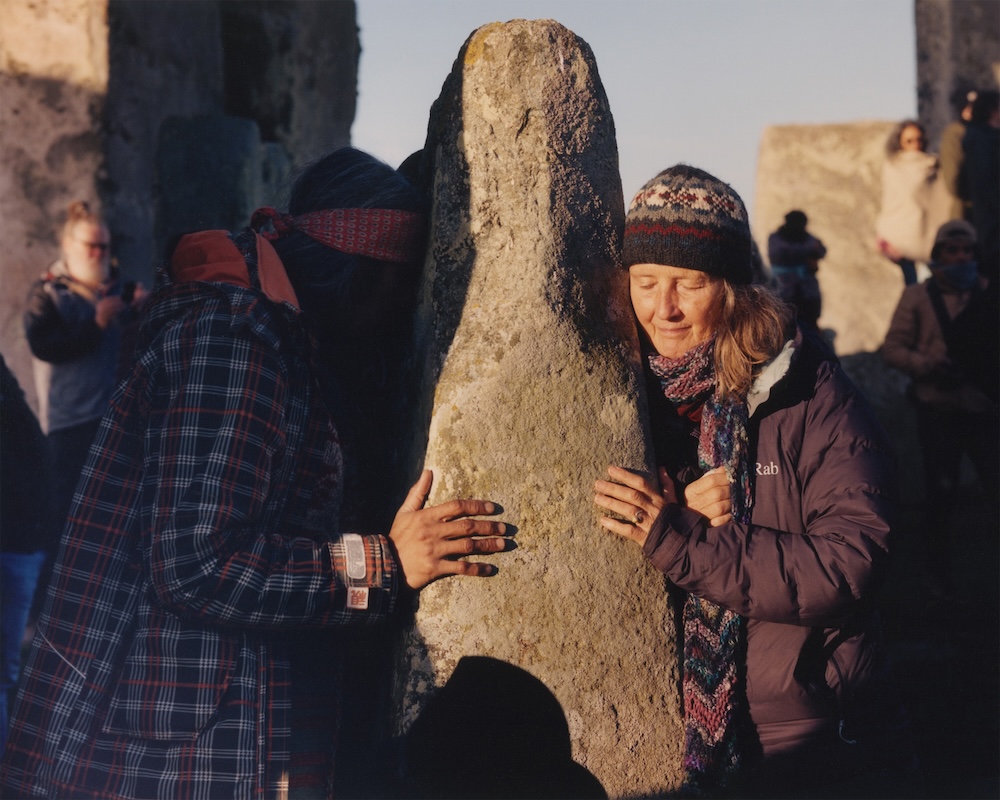
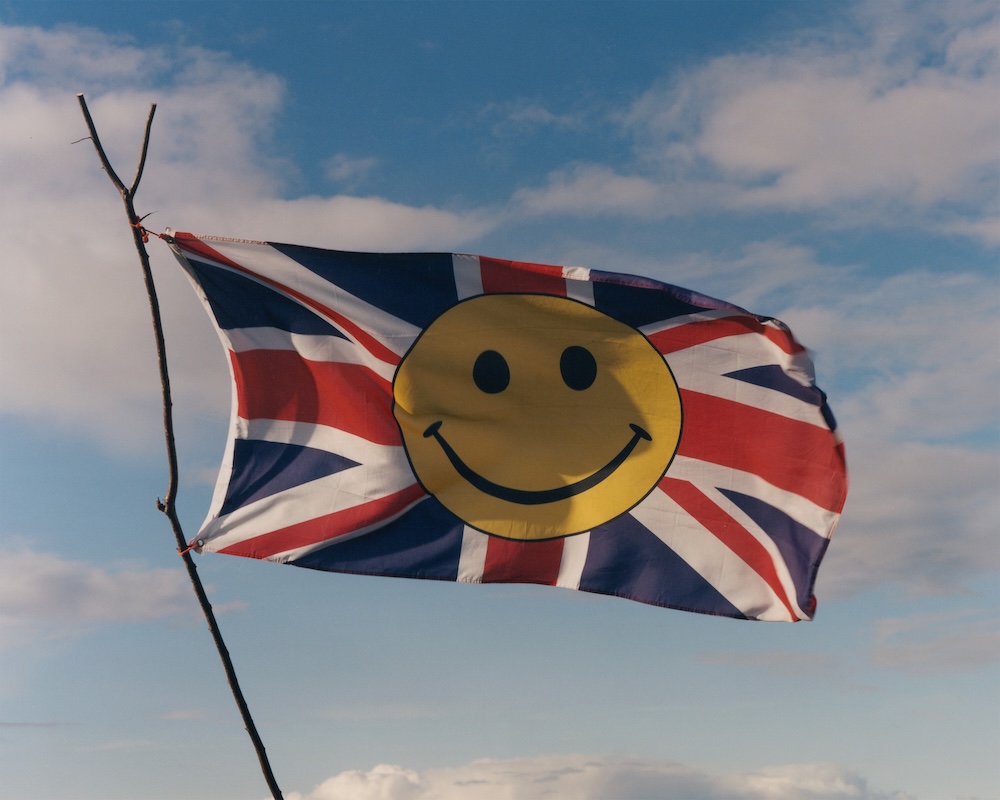
Miller first visited the site in the winter solstice of 2014, and he’s always wanted to do a project on the subject. He’s long been interested in subcultural studies and counter-culture, particularly people subverting the mainstream with ideas and philosophies about life – whether that’s drill rappers, truckers, bikelife kids, mudlarkers, pagans, or those attending solstice at Stonehenge. “I think this is more important than ever in our increasingly alienating world,” he explains. “So I often find myself trying to tell stories to celebrate different subcultural movements in an aesthetically driven way.” So it was a match made in collaborative heaven, and Miller began documenting Hope and his campaign to create a sunset-drenched new photo project and film, titled Free The Stones!
The series began in 2023, and throughout you’ll see people hugging rocks; waving a British flag with an acid house smiley; wearing mediaeval outfits; sporting pagan skulls as headdresses; enjoying a sense of community, togetherness and energy. Girls gathering nearby the rocks, families enjoying their outing. A mobile home pausing for a quick pitstop roadside. People getting lost in the magic of the stones, wearing ancient garb, and caught in freeze frames that could have been taken thousands of years ago. “I wanted to celebrate Stonehenge, its magnetic pull, the primal energy it gives people,” says Miller. “I was really interested in the crossover of subcultures that around it too, whether it’s pagan, free festival, new age traveller.” Miller worked with Josh Homer and Peter Butterworth on the film, alongside Hope – of course – and the people he’d met at Stonehenge.
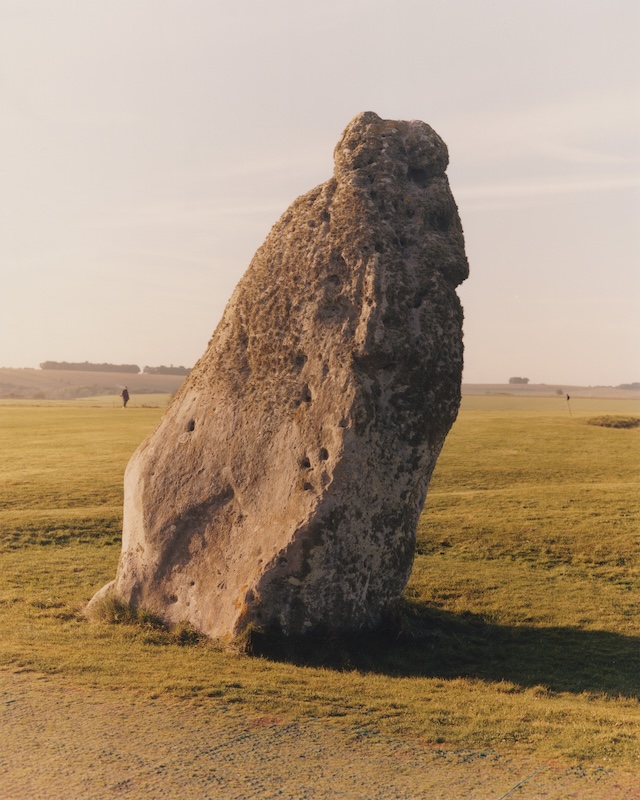
Speaking of his subjects, Miller recalls meeting a guy named Mad Alan outside the Royal Courts of Justice at a save Stonehenge protest. “He had tattoos all over his face and even in his eyes,” he says, “He was really nice.” There was also someone with a pet crow, and apparently he met Ronnie Wood from the Rolling Stones at the equinox and was “none the wiser when introduced – he’d have been a great addition to the project.”
The project was built on a few pillars, one of which is to shed light on the people who attend the solstices, showing freedom of thought and a point of difference to the way they live their lives – the other side that is often ignored in modern civilisation and its portrayal in the media. Miller adds, “I learnt traveller culture is real and met people from the community who are dedicated to pursuing their own way of life, on the road and away from a ‘normal’ society. I admire their spirit, warmth and self-sufficiency. It didn’t seem like an easy way of life (at least to me) and I respect their commitment to living that way.” The other pillars include elevating Hope’s campaign in order to bring back the Stonehenge free parties, and lastly, raising awareness of how the site is more than just a hotbed for tourism. It’s a place of “real energy where people can revert to their primal roots – even for a few hours”, he says.
It’s been recorded by English Heritage that Stonehenge was built in stages; the first monument around 5,000 years ago, and the stone circle around 2500 BC. For comparison, it’s several thousand years older than the pyramids. Many visitors have been visiting the archaeological site of Stonehenge for years, yet its future is looking precarious due to plans to widen the A303 road which runs adjacent to the stones – people are petitioning to devoid these plans and, if absolutely necessary, build a tunnel instead to avoid destruction. “I learnt that over and above Stonehenge being a tourist hotspot and sometimes a political bargaining chip with the ongoing A303 road tunnel debate, it is a sacred space for modern day pagans, travellers and free festival rebels,” says Miller. “It occupies such a space in our national consciousness, cutting across our culture, and everyone has their own interpretation of what it’s about, which I find fascinating.”
